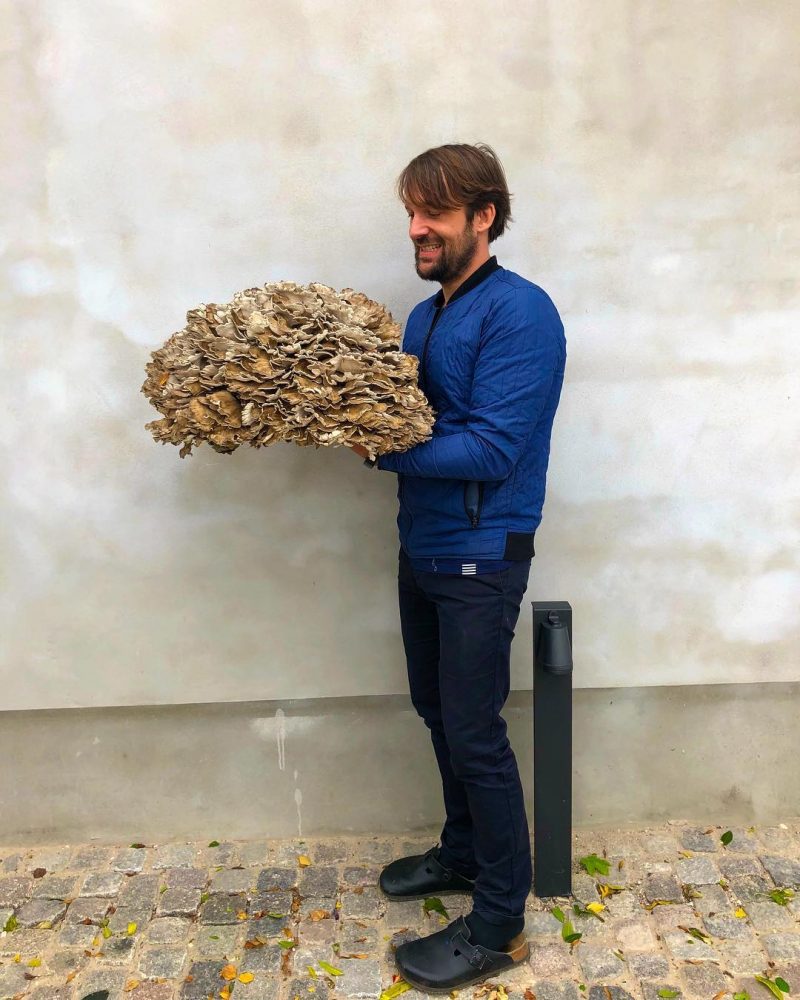Japanese Master Teaches ‘Shojin Cuisine’ to One of the Best Chefs in the World
As parts of the world transition to a more plant-based diet, restaurants offering “Shojin” cuisine have become more accessible, drawing patrons from all walks of life.
But what exactly is Shojin, and how does it work as a dietary choice?

René Redzepi, an award-winning Danish chef — and co-owner of Copenhagen’s two-Michelin star restaurant Noma — set out for Japan to learn about the cuisine from an authentic Japanese master, Toshio Tanahashi.
“It’s a style of cooking originating from the 7th century Japan. A vegetarian cuisine meant for Buddhist monks abstaining from taking any life,” Redzepi writes in an Instagram post. “The cuisine of Zen Buddhism.”

Not all Buddhists are vegetarians, but for ancient monks who followed the precept of abstaining from the taking of life, vegetarianism was the way to nourish their physical bodies.
First introduced to Kyoto monasteries from China in the 7th and 8th centuries, the cuisine primarily consisted of vegetables that were boiled or eaten raw with simple seasonings.
Dogen Zenji, the founder of the Soto sect of Zen Buddhism, wrote an essay titled “Tenzo Kyokun” (“Instructions for the Cook”), which sparked further development in the art.
By the 13th century, it evolved to become “Shojin ryori,” combining the words “shojin” (meaning “devotion”) and “ryori” (meaning “cooking”).

Based in Kyoto himself, Tanahashi has decades of experience in Shojin cuisine, hosting events around the world to share its philosophy.
He believes that the age of gluttonous cuisine is over and that Shojin is “the best alternative to our meat-heavy, fat-saturated and wasteful diets.”
In February 2008, Tanahashi established the Zecoow Culinary Institute, which plans to establish a Shojin “dojo” — a traditional space for learning — that would serve as a center for “proliferating and advocating the art and spirit” of the cuisine.
“In my pursuit of Shojin cuisine, regardless of whether from the east or the west, my aim is to continue to discover how the unique Shojin approach can reveal true beauty and health in our clothes, home, environment, healing practices, and agriculture,” Tanahashi says.
As its name implies, Shojin ryori is not merely an adherence to a vegetarian diet. In essence, it is the practice of meditating while consuming a plant-based diet.
“Plants give tangible and intangible joys of living, helping establish a healthy life,” Tanahashi says. “This is the basis of the right way to live for mankind. No more and no less. The gratitude in knowing that this is enough will lead to good health.”
Like the concept of veganism, Shojin goes further beyond the cuisine, according to Tanahashi.
“A plant-centered, calm and modest life will lead to physical and mental health. Crime and conflict will be reduced,” he says. “I believe that a plant-based life is the richest and most beautiful form of humanity, [when subscribed to] in all clothing, food, and shelter.”
Redzepi, meanwhile, is part of MAD, a “global cooking community with a social conscience and an appetite for change.” He has also co-written a book on fermentation with David Zilber, who also works at Noma.
Redzepi, who has nearly 900,000 followers, concluded his Instagram post by sharing his learnings from Tanahashi. Some include:
- Good cooking makes good poo.
- Cooking food is meditation.
- Food can be medicine.
- Bad temper makes bad food.
- Simple is best.
- Don’t be greedy.
- Don’t be wasteful.
- Beauty starts inside — eat well.
- If health and nutrition was a priority for food today, most would lose their Michelin stars.
- Mindfulness over Michelin.
- Be thankful and eat with gratitude.
- Be respectful and thank the people that grow food.
“Nature and environment is the starting point for us all. By attaining a symbiosis with the land, we can understand that earth and body are inseparable,” he adds.
Feature Images via @reneredzepinoma (left, right), Zeecow Culinary Institute (center)
The post Japanese Master Teaches ‘Shojin Cuisine’ to One of the Best Chefs in the World appeared first on NextShark.
Contributer : NextShark



 Reviewed by mimisabreena
on
Tuesday, January 14, 2020
Rating:
Reviewed by mimisabreena
on
Tuesday, January 14, 2020
Rating:
















No comments:
Post a Comment